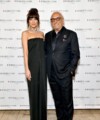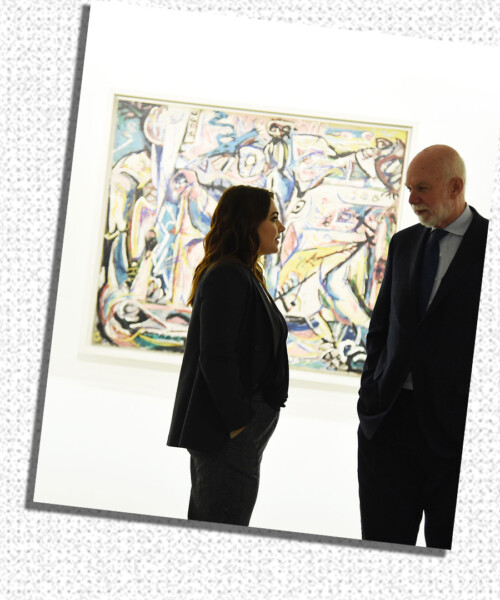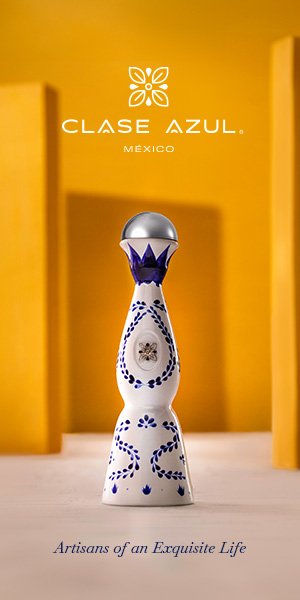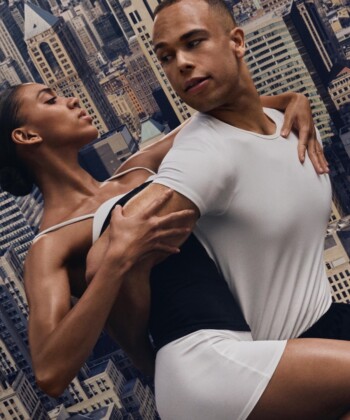This spring, don’t miss a special collaboration at the Guggenheim Museum. In partnership with Italian coffee company Lavazza, the museum will debut Visionaries: Creating a Modern Guggenheim, a show exhibiting nineteenth through mid-twentieth-century works from the collection of the Solomon R. Guggenheim Foundation. This will be the fourth Guggenheim exhibit sponsored by Lavazza, a Global Partner of the institution. Lavazza’s former Corporate Image Director, Francesca Lavazza, was recently elected to the Solomon R. Guggenheim Foundation’s Board of Trustees, and is excited to further her involvement in the Guggenheim program. As Corporate Image Director at Lavazza, she managed international advertising campaigns, including the brand’s annual calendar, shot by noted photographers such as Annie Leibovitz, Helmut Newton and David LaChapelle, to name a few. Here, Francesca Lavazza talks the brand’s link to the art world and what to expect from Visionaries.
When and how did you become interested in art?
I have always been a lover of film, photography and design, and am strongly passionate about contemporary art. After working for a long time in advertising, I decided to further pursue my passion for the arts and moved to New York to take screenwriting courses at the New York Film Academy. Then, I was lucky enough to be able to apply my learnings and interweave my longtime passion for the arts into Lavazza’s global communication strategies as Corporate Image Director for a number of years. And last but not least, I also feel that being Italian and having been exposed to some of the world’s greatest treasures from an early age probably had something to do with my love for creativity, too.

Francesca Lavazza
What is the Lavazza brand’s relationship with the art world?
As a company fueled by creativity and innovation, we at Lavazza are constantly looking to expand our existing commitment to the arts and culture. This is one of the key pillars of our international strategy, allowing us to position Lavazza as a premium iconic brand. Through our famed annual calendar and our relationships with some of the world’s most iconic photographers, global advertising campaigns and strategic museum partnerships we have been able to tell the story of the company’s heritage and share our values.
Lavazza has also helped sustain major exhibitions within the most important cultural institutions worldwide through strategic partnerships with the likes of the Guggenheim Museum in New York, the Hermitage Museum in St. Petersburg, the Civic Museums of Venice and, new this year, the Peggy Guggenheim Collection in Venice, thus transforming Lavazza into a Guggenheim Global Partner.
What was the process like for becoming elected to the Solomon R. Guggenheim Foundation Board of Trustees?
I’ve known the museum’s director, Richard Armstrong, for some time now. When I first met him in New York we were planning our first partnership exhibition, “Italian Futurism, 1909–1944: Reconstructing the Universe,” which had a focus on a very interesting period in the history of Italian arts. The next exhibition we worked on together was “Alberto Burri: The Trauma of Painting.” With the support to these two important exhibits, we were able to help build a cultural bridge between our two countries.
After two years of exhibition partnerships, I was invited to join the Board of Trustees, which was to me an honor and a great challenge. Like Lavazza, the Guggenheim is also a brand that has continued to grow and evolve overtime. Our unique worlds collide however with the commonality of art and culture globally. I’m honored be a part of the board for a fellow brand that I am so passionate about, and contribute to the further growth and evolution of our brands together.

Inside the show
What was the inspiration for Visionaries: Creating a Modern Guggenheim?
Opening on the eightieth anniversary year of the Solomon R. Guggenheim Foundation, this celebratory exhibition explores avant-garde innovations of the late nineteenth through mid-twentieth centuries, as well as groundbreaking activities of six pioneering patrons who brought to light some of the most significant artists of their day and established the Guggenheim Foundation’s identity as a forward-looking institution.
How were the pieces selected for the show?
The curators at the museum (Megan Fontanella supported by Ylinka Barotto) did an incredible job analyzing the Guggenheim’s collection all over the world and in assembling many of the foundation’s most iconic works along with treasures by artists less familiar. The exhibit indeed brings together important works by artists such as Alexander Calder, Paul Cézanne, Marc Chagall, Wassily Kandinsky, Paul Klee, Fernand Léger, Piet Mondrian, Pablo Picasso, Jackson Pollock, and Vincent van Gogh.

Guests look at Wassily Kandinsky’s “Composition VIII”
What makes this exhibition unique?
Visionaries is unique not only because it is taking place on the eightieth anniversary year of the Guggenheim, but also because it is a truly rare opportunity to explore the history of the foundation. I am fascinated by the stories behind the six patrons whose disruptive tastes assembled collections of an incredible historical importance that now make up the basis of the Guggenheim’s permanent global collection.
It is also a rare opportunity to see some iconic works assembled together for the first time. For example, the exhibition includes nearly twenty-five works from the Peggy Guggenheim Collection, seldom displayed outside of the Venice palazzo and includes canvases by Max Ernst, René Magritte, and Yves Tanguy, and sculptures by Joseph Cornell and Alberto Giacometti.
Are there one or two pieces that you think represent the show particularly well or are extremely significant? If so, which pieces?
Among the group of paintings that have come over from the Peggy Guggenheim Collection in Venice is Jackson Pollock’s Alchemy, which he painted in 1947. It is considered to be among his finest paintings and a celebrated icon of postwar abstraction. I consider it to be such a powerful piece, and can stare at it for hours. And I am particularly proud that Lavazza has been able to provide support in its restoration and its journey to the United States for the first time in fifty years.
Main image credit: Francesca Lavazza and Richard Armstrong







































